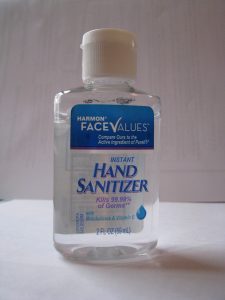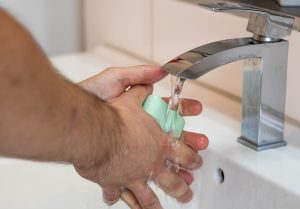It’s back-to-school season already! The time of year that so many parents welcome as a return to normal routines, can also, unfortunately, be the time of year when kids are exposed to new germs.
Many parents and healthcare professionals dread the start of the school year and the accompanying wave of sickness. While we are preparing for the new school year, let’s look at how we can avoid back-to-school germs, and potentially another year of shut down schools due to new waves of COVID-19.
How are germs spread in schools?
Schools are natural breeding grounds for germs, because they are warm environments with lots of people in close quarters. Children are especially susceptible because they are often sharing toys, food, and classroom equipment with each other.
And, let’s face it, small children aren’t fastidious with hygiene; runny noses, sneezes, and coughing all can spread germs onto nearby surfaces. Small children are also very high contact, touching each other a great deal, particularly in and around the face.
What are the germiest places in schools?
The microbiologists at NSF tested a variety of school surfaces to find out what the germiest places were. This was done in order to help educators and school cleaning crews better protect kids. While they only tested two schools, here are their top 5 results, in order:
- water fountain spigot (classroom)
- water fountain spigot (cafeteria)
- plastic reusable cafeteria tray
- faucet (cold water handle)
- faucet (hot water handle)
Since many viruses and bacteria can live on surfaces for up to two days, it’s clear that these high-contact places deserve extra vigilance.
How to avoid getting sick in school?
The best way for everyone to prevent sickness is to maintain general health with sufficient sleep, nutritious food, adequate hydration, and healthy exercise. Maintaining overall health keeps the immune system strong and less susceptible to illnesses.
In school, to prevent transmission of germs and sickness, all students, educators, and faculty need to wash their hands thoroughly and often. Proper handwashing involves thoroughly scrubbing the hands with soap under warm water.
Do this for at least 20 seconds before rinsing and using a clean towel to dry.
 Children and parents may also carry small containers of hand sanitizer to help keep hands clean, but sanitizer doesn’t replace washing when possible.
Children and parents may also carry small containers of hand sanitizer to help keep hands clean, but sanitizer doesn’t replace washing when possible.
How to avoid spreading germs in school?
Even with all that prevention, kids are going to get sick. The average student will get 5-6 colds during the school year. If a child is a little under the weather, some good habits will help keep them from further spreading germs.
 Parents can help teach kids to avoid spreading germs by teaching correct handwashing (one educator teaches kids to sing “Happy Birthday” to themselves twice, to make sure they wash long enough), showing children how to use a drinking fountain without touching their lips or mouths to the surface, and teaching children to use tissues or to cough and sneeze into their elbows.
Parents can help teach kids to avoid spreading germs by teaching correct handwashing (one educator teaches kids to sing “Happy Birthday” to themselves twice, to make sure they wash long enough), showing children how to use a drinking fountain without touching their lips or mouths to the surface, and teaching children to use tissues or to cough and sneeze into their elbows.
If it seems like your kids are on an endless cycle of school-transmitted illness, and you can’t avoid the back-to-school plague, it might be time to call Bio Recovery for a professional infectious disease evaluation and decontamination.
Okay, maybe that’s overkill, but having sick kids is frustrating, and we feel your pain.
So this September, add tissues and hand sanitizer to your back-to-school shopping list. Teach your kids proper handwashing and emphasize how important it is.
Keep your kids and your family in an overall healthy lifestyle, to boost the immune system and ingrain life-long good habits. Talk with your family physician about flu shots.
And know that, in spite of everything, there will still be some school-related germs and resulting illnesses throughout the school year.
Your best efforts will pay off in fewer missed school days and healthier kids, but runny noses and messy sneezes are a fact of life for years to come.
